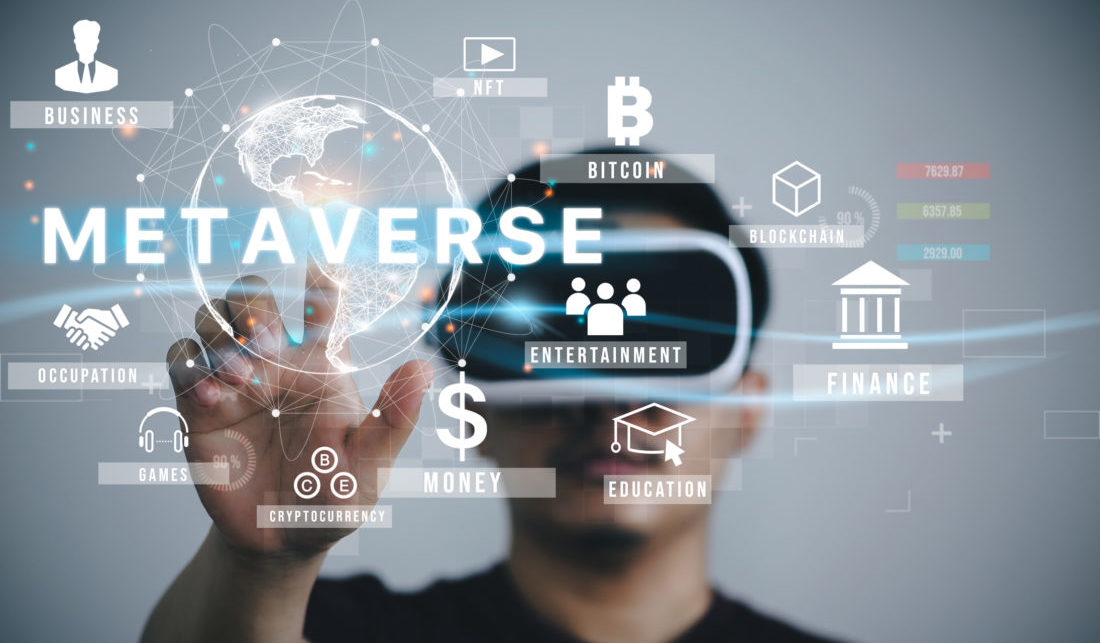M+E Connections

Smart Content Summit: ADIO TAG to Help Media Companies Shift From Digital to Meta
Story Highlights
The new, patented ADIO TAG that Robert Barbiere, an advisor for Datavault/ADIO, spotlighted March 10 during the breakout session “The Connective Tissue Between Physical, Digital, and Meta” at the Smart Content Summit in Los Angeles, stands to help media companies transition from digital to meta, he said.
The ADIO TAG will enable content owners to track the distribution and consumption of their catalogs across all ecosystems, including social media, he explained.
During the session, Barbiere guided the audience and those watching remotely through what the entertainment industry needs to know about Web 3.0, specifically how people should be thinking about and planning their infrastructures to support the new asset and data needs and demands.
The words crypto, blockchain, metaverse and non-fungible token (NFT) are everywhere we turn these days and are popping up in nearly every conversation people have in the technology sector.
It wasn’t that long ago when the strange new words on the block were streaming, MPEG, video on demand (VOD) and over-the-top (OTT).
Now, the media landscape is entering a tectonic shift from digital to meta and the transformation is as large and impactful as the shift from physical to digital was. Shifts like this aren’t easy and can even prove fatal.
When headlines read 99.2% of NFTs are not selling or $300 million in crypto was hacked and stolen, it’s a clear indication that people and companies are rushing without preparation or education.
Assets and data need to move seamlessly and efficiently from physical to digital to meta and back, and new technology platforms will make that possible.
“Consumption today is both expanding and shifting,” Barbiere said. He conceded that’s “no news to any of you watching” the presentation.
 “Over the next three years, three consumption forms are really going to get their foothold and expand and grow the quickest” in terms of consumer spending, he predicted. Those three consumption forms are gaming, over-the-top (OTT) video, and virtual reality, he said.
“Over the next three years, three consumption forms are really going to get their foothold and expand and grow the quickest” in terms of consumer spending, he predicted. Those three consumption forms are gaming, over-the-top (OTT) video, and virtual reality, he said.
He provided several video consumption facts. For instance, video is the number one source of information for 66% of people, he said. Also, people spend an average of six hours and 48 minutes a week watching online video content, he noted. And more video content gets uploaded by the public in 30 days than what the major U.S. TV networks have broadcast in 30 years, he said.
Other facts he pointed to: More than 75% of all video views come from mobile devices, 92% of mobile video viewers share content with others, 82% of Twitter users mainly watch video content on the platform, more than 500 million people watch Facebook videos every day, and YouTube uploads about 500 hours of video content to the platform each minute.
A significant amount of time is being spent by people on the major social networks, he said, estimating it comes out to more than four years per person during the course of their lifetimes. And the numbers “continue to get exponentially higher,” he said.
He called safe harbor the “bane of media companies’ existence,” saying it puts everybody in media, especially on the rights holders’ side, “at a massive disadvantage.”
That is because online content sharing service providers give media rights holders little to no distribution or consumption data and, under safe harbor, they are liability free only when they don’t analyze content on their sites, he said.
Outside of YouTube, film studios now see and track under 10% of all of their catalog use and consumption, he added.
He went on to explain how the new ADIO TAG will help content owners.
“We have a trial beginning in about 90 days” in which rights holders will be able to begin the process of injecting ADIO TAGS into their content, he said.
“I would say full-scale industry capable of inserting ADIO TAGS will likely be within the next year but the process is starting in the next 90 days,” he noted, adding: “We’ll be a trackable system across multiple registries and identification protocols.”
Film studios will be able to deploy custom strategies in their ADIO TAG injection, he pointed out.
In “phase one” of the ADIO TAG plan, the ADIO TAG Registry will be integrated with the main industry identification systems, he said. In “phase two,” media creators and rights holders will start inserting ADIO TAGS in content they want tracked across all distribution ecosystems, he explained.
And, in “phase three,” ADIO PASS scanners will be placed in front of all digital distribution platforms, he said, adding: “The ADIO PASS is the easy part; that technology already exists. What we do need though” is for OTT, broadcast/TV, metaverses and online content-sharing service providers “to give the nod and say they are willing to put an ADIO PASS in front of their gateway – it costs nothing to them – across all of their ingestion points.”
ADIO PASS identifies any ADIO tag within the content and, in real-time, reports all that information back to the rights holders and administrators, he said, projecting it will take about a year to get the first sets of ADIO PASSES deployed.
To view the presentation, click here.
The 2022 Smart Content Summit event was held in conjunction with the EIDR Annual Participant Meeting (EIDR APM), and was presented by Whip Media. The event was produced by MESA, in association with the Smart Content Council and EIDR, with sponsorship by BeBanjo, Signiant, Qumulo, Adio, Alteon, Digital Nirvana, Slalom and Rightsline.









